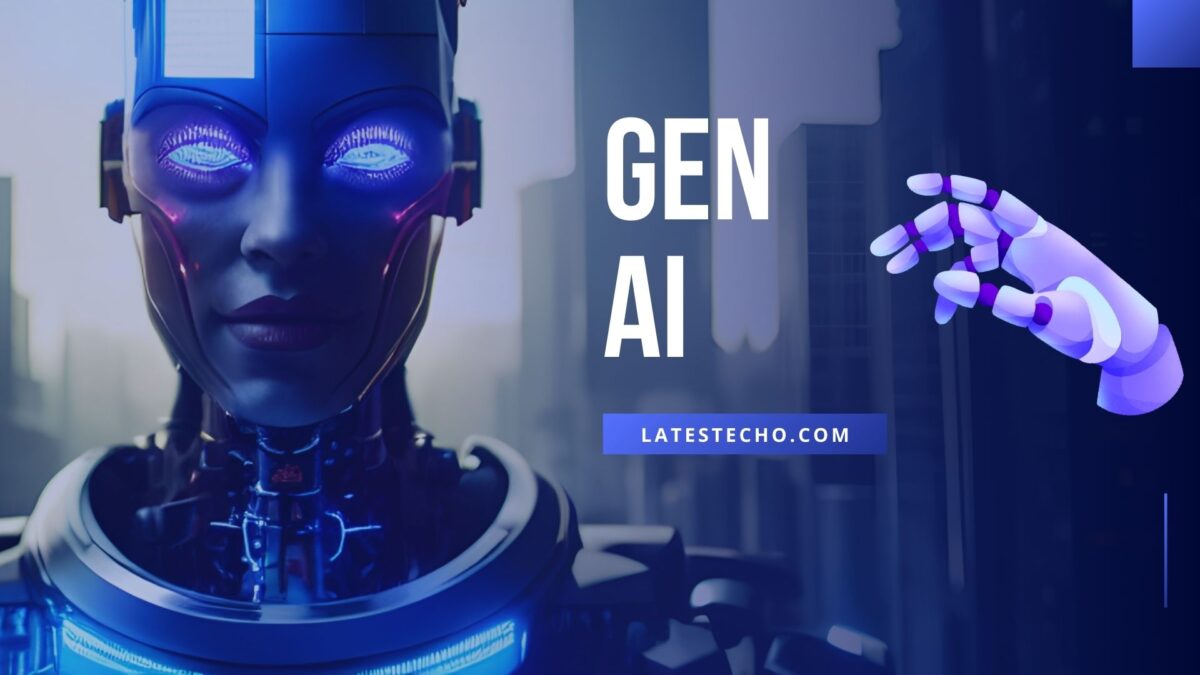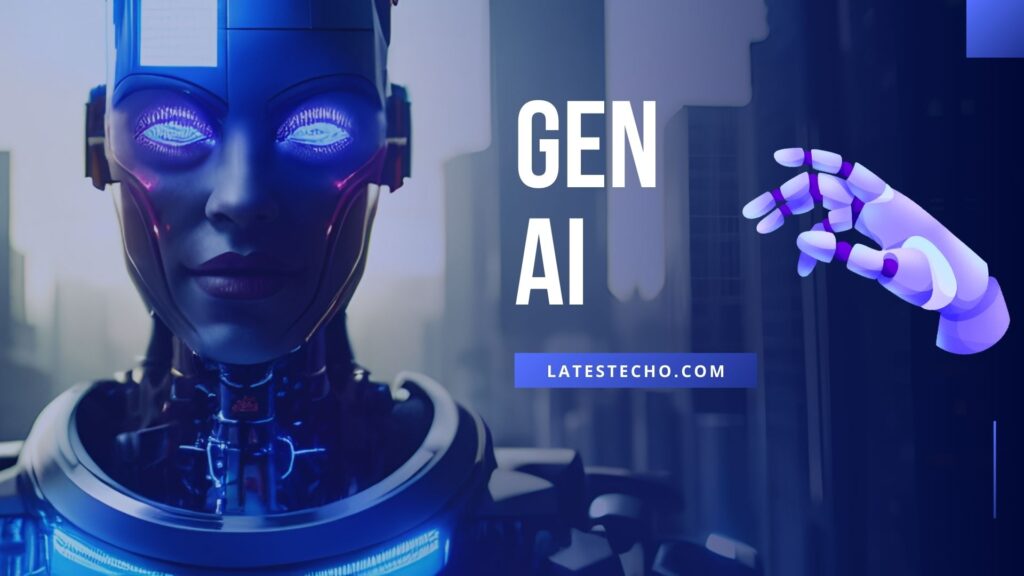
Generative AI:Demystifyin’ the Mind-Bending Magic
Wow, can you believe that just a few years ago, the idea of Artificial Intelligence AI creating art, writing stories, or holding conversations seemed like science fiction? Just imagine the first time you saw an AI-generated image – hopefully your jaw literally dropped! Today, generative AI has become such a game-changer that it’s practically everywhere. Did you know that by 2024, over 110 million people are using generative AI tools in their daily lives? Let’s take you on an exciting journey through the world of generative AI, breaking it down in a way that’ll make perfect sense, even if you’re just starting to explore this fascinating technology.
What is Generative AI?
Think of generative AI as your super-creative digital friend that can create new things based on what it has learned – kind of like how a child learns to draw by looking at lots of pictures! At its core, generative AI is a type of artificial intelligence that can create new content – whether that’s text, images, music, or even computer code. It’s like having a virtual artist, writer, and composer all rolled into one. The really cool part? It actually learns from the existing data and creates something completely new by using the pattern that it has learned.
How Does Generative AI Work?
Remember playing with building blocks as a kid? That’s surprisingly similar to how generative AI works! These systems use something called neural networks (think of them as digital brain cells) that learn patterns from massive amounts of data. Once they understand these patterns, they can create new content that follows similar rules.
Imagine teaching a generative AI about dogs. You’d show it thousands of dog pictures, and eventually, it would learn what makes a dog look like a dog – the fur, the tail, the ears, everything! Then, it can create brand new images of dogs that never existed before. Pretty amazing, right?
Popular Types of Generative AI Tools
Text Generation Tools
The first time you used ChatGPT, maybe you haveS spent hours asking it everything from recipe ideas to help with your homework. Text generation tools can write stories, answer questions, and even help with coding. They’re like having a knowledgeable friend who’s always ready to help!
Image Generation Tools
DALL-E, Midjourney, and Stable Diffusion have completely transformed how we think about creating art. We can still imagine how we used to think about drawing a picture thinking like “a cat riding a unicorn through space” and then these days these tools have absolutely blown away our mind with the results on being able to exactly draw what we have always been wanted. These tools turn your imagination into visual reality!
Real-World Applications of Generative AI
Business Applications
From automating customer service to creating marketing content, businesses are finding incredibly creative ways to use generative AI. Many small startups use AI to compete with bigger companies by creating professional-looking designs and engaging content without breaking the bank.
Creative Industries
Artists, writers, and musicians are using generative AI as a collaborator rather than a replacement. It’s fascinating to see how AI can spark creativity and help overcome creative blocks.
Popular Generative AI Models
You know what’s fascinating? The world of generative AI models is like a bustling city of digital brains! First up is GPT-4, which blowns away our mind with its ability to understand and generate human-like text. It’s like having a conversation with a super-smart friend who’s read every book in the world!
Then we have DALL-E 3 and Midjourney V6 for images – these are absolute game-changers! For audio enthusiasts, AudioCraft and MusicLM are creating everything from realistic sound effects to original music compositions. And Stable Diffusion XL – its image generation capabilities are simply mind-blowing!

Real-World Use Cases for Generative AI
Ever wondered how generative AI is actually being used in the real world? Here are some exciting examples that have revolutionized different industries:
In healthcare, generative AI is helping create new drug compounds and predict protein structures – pretty incredible, right? There are marketing teams who use it to create personalized content at scale, saving weeks of work. Several developer are using GitHub Copilot to write code faster than ever before.
Education has been transformed too! Teachers are using gen AI to create customized learning materials and provide personalized tutoring. In the entertainment industry, it’s helping create special effects, background music, and even helping writers brainstorm plot ideas!
Benefits of Generative AI That Will Blow Your Mind
The benefits of generative AI have honestly surprised even a tech enthusiast like me! First off, the productivity boost is incredible. Every sort of task can happen in minutes that used to take days and days before. There were times where we used to spend hours brainstorming content ideas – now AI helps, generate creative concepts in seconds!
Cost reduction is another huge advantage. Small businesses can now create professional-quality content without hiring expensive agencies. The consistency in output is remarkable too – whether you’re generating 1 or 100 pieces of content, the quality remains stable. Tools that were once available only to big corporations are now at everyone’s fingertips. It’s like having a team of experts in your pocket!
Understanding the Limitations of Generative AI
Generative AI isn’t perfect, and it’s important to understand its limitations. These systems can sometimes hallucinate or generate false information. They’re also heavily dependent on their training data – if the data is biased or outdated, the output will be too. And while they’re great at pattern recognition, they lack true understanding and consciousness. Resource requirements are another consideration. High-quality AI models need significant computational power, which can be expensive and energy-intensive.
Critical Concerns Surrounding Generative AI
The rise of generative AI has brought some valid concerns that we can’t ignore. Privacy is a big one. There’s also the question of copyright and intellectual property. Who owns AI-generated content? It’s a complex issue that’s still being debated. Job displacement is another concern that keeps coming up. While AI will create new opportunities, it’s changing the job landscape significantly. We need to prepare for these changes through upskilling and adaptation.
Ethics and Bias in Generative AI: A Critical Perspective
We can sometime identify how AI systems can sometimes perpetuate existing biases. For example, early image generation models showed clear biases in how they represented different demographics. It’s crucial to understand that AI systems learn from human-created data, which means they can inherit our biases.
Ethical considerations also extend to deep fakes and misinformation. We need robust frameworks to ensure responsible AI development and deployment. Users should know when they’re interacting with AI-generated content.
Generative AI vs. Traditional AI: Understanding the Difference
If traditional AI is like a calculator that gives you answers, generative AI is like an artist that creates something new! Traditional AI excels at tasks like classification and prediction, while gen AI can create, imagine, and innovate. The key difference lies in their output. Traditional AI might tell you if a picture contains a cat, but generative AI can create a new image of a cat. It’s the difference between recognition and creation!
A Brief History of Generative AI: From GANs to Today
What a journey it’s been! Generative AI’s story really kicked off with Generative Adversarial Networks (GANs) in 2014. The first GAN-generated images – they used to be pretty blurry, but revolutionary for their time! Then came the transformer architecture in 2017, which changed everything. This led to models like GPT and BERT, which set new benchmarks in natural language processing. By 2022, we saw the explosion of text-to-image models like DALL-E and Stable Diffusion, making AI art accessible to everyone.
Best Practices for Using Generative AI Effectively
Through lots of trial and error, here are some crucial learnings some best practices. First, always start with clear, specific prompts – it’s like giving good directions to a helpful assistant. Don’t expect perfect results on the first try. Always verify AI-generated information, especially for critical applications. Just think gen AI as an addition to the human creativity as it can shape or give some enhancement on the human creativity. And most importantly, stay informed about the ethical implications of your AI usage.
The Future of Generative AI: What’s Next?
Looking ahead, the future of generative AI is incredibly exciting! We’re seeing trends toward more multimodal AI systems that can work with text, images, and sound simultaneously. Imagine having a conversation with an AI that can understand and generate all types of media! We’re also seeing progress in making AI more environmentally sustainable and computationally efficient.
Conclusion
As we dive deeper, gen AI continues to evolve and amaze us with its capabilities. Whether you’re a curious beginner or a tech enthusiast, there’s never been a more exciting time to explore this technology. Remember, gen AI isn’t here to replace human creativity – it’s here to enhance it! I encourage you to try out some of these tools yourself and see what amazing things you can create. Who knows? You might just discover your new favorite creative companion!
Frequently Asked Questions about Generative AI
Is generative AI safe to use?
Yes, when used responsibly and with proper guidelines. Always verify outputs and be mindful of data privacy.
Can generative AI replace human creativity?
While it’s a powerful tool, its best viewed as an enhancer of human creativity rather than a replacement. The most effective approach is human-AI collaboration.
How can I get started with generative AI?
Start with user-friendly tools like ChatGPT or Canva’s AI features. Begin with simple projects and gradually explore more complex applications.
What distinguishes generative AI from artificial intelligence?
Traditional AI identifies and analyzes existing content, while generative AI creates new content. Think of regular AI as a detective that spots patterns, and generative AI as an artist that makes new things. Where machine learning models might classify images, generative models can create entirely new images using deep learning and neural network architectures.
What are generative AI examples?
Popular generative AI models include text generators like ChatGPT and Claude, image creators like DALL-E 3 and Midjourney, and audio tools like AudioCraft. These artificial intelligence systems use transformer architectures and deep learning to generate synthetic content across different media types. Each tool specializes in specific content generation tasks, from natural language processing to computer vision applications.
Is ChatGPT gen AI?
Yes! ChatGPT is a generative AI language model that uses transformer architecture to create human-like text responses. It’s powered by GPT (Generative Pre-trained Transformer) technology, enabling it to understand context and generate coherent content across various topics through advanced natural language processing.
What are the free Gen AI tools?
Free generative AI tools include ChatGPT’s basic version, Google Bard for text generation, and Stable Diffusion for image creation. For code generation, GitHub Copilot offers free student access. These AI-powered tools use machine learning to help with content creation, though some features might be limited in free versions.
What is the most famous generative AI?
ChatGPT leads the generative AI revolution, followed by DALL-E 3 for image creation and GitHub Copilot for code generation. These AI models showcase the power of deep learning and neural networks in creating human-like content. The field continues to evolve with new computational models and artificial neural networks advancing creative possibilities.
What is the difference between gen AI and ChatGPT?
While ChatGPT is a particular language model with an emphasis on text production, gen AI is the larger technology category that includes all AI systems that produce content. Think of generative AI as the technology powering various creative AI tools, from image synthesis to music composition, whereas ChatGPT specializes in natural language processing and text generation.
